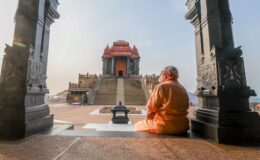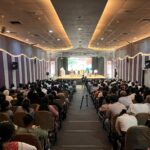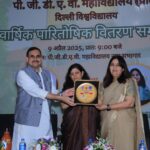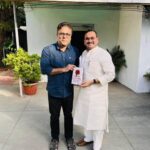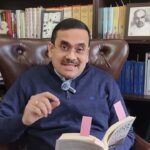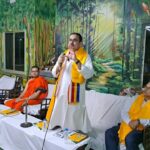Sister Nivedita: Struggle for the ‘Consciousness of Unity’
- By : Anirban Ganguly
- Category : Articles
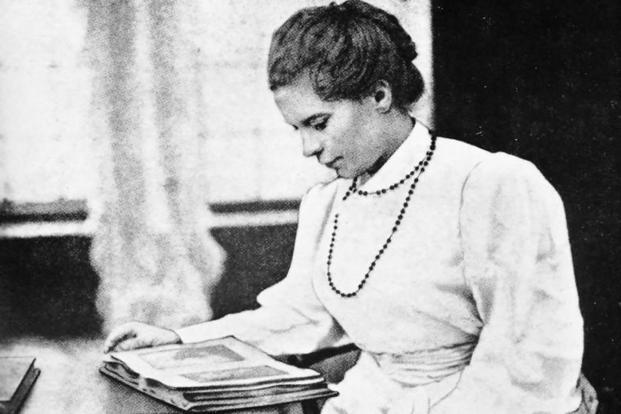
Having received the final welcome from her Master Swami Vivekananda, Sister Nivedita set sail for India. It was the beginning of an eventful and unique journey – that left an indelible mark on the soul of the nation – and ended in the early hours of 13th October 1911 the day she ‘soared higher up upon the wings of Eternity’
In our collective reading of India’s history and in narrating the lives of those countless personalities who made a contribution to our national awakening – political, cultural, and educational – we have often been selective, constantly eulogising some, while marginalising others. This often-flaunted habit, especially by an interested and influential section in the academia and in the political arena in the last seven odd decades since India’s independence, has promoted a national culture of selective forgetfulness – of amnesia. In the process, some of our most multifaceted and inspiring personalities, who have been integral not only to the struggle for national emancipation but more importantly who have helped preserve the nation’s civilisational identity, having rekindled faith in her spiritual and political destinies, have today nearly disappeared from the national discourse. In short, many of those who had directed, through their multifarious actions, our long-suppressed national soul towards utterance and self-expression have been themselves suppressed or edged out of the collective national consciousness, post-independence.
People who deliberately or through oversight, weaken the collective memory can never really perpetuate and defend its civilisational identity. It can never, in the true sense, decolonise itself. This weakening of our collective memory was one of the principle intentions of our erstwhile imperial masters. They had intended to make their subjects plus royaliste que le roi and in this, they used an education, as the historian KM Panikkar (1895-1963) has argued, that ‘largely de-nationalised…those whom it…touched’.
Such a method thus, eventually spawned a section of trendsetters who ‘abjured most of the things which their fathers had prized, — all that complex tradition which had been aforetime the very soul of their people…[these] leaders no longer had their root in their native soil; they were parasitic upon the West.’ The legacy of this training continues to manifest itself in the present day through this trend of forgetfulness. It is an axiomatic truth that those who have experienced colonisation will never internalise in its entirety the deep degeneration that initiates and those who have not experienced it will never fully comprehend its long-lasting impact and devastating after-effects on the psyche and physical existence of the colonised.
The other adverse manifestations of the intellectual marginalisation of such profound personalities is that it gives rise to banal and inane debates in our polity on the relevance or irrelevance of patriotism, sacrifice for nation, sense of national service, the need for a national anthem and on whether one should display due honour to it and the sentiments that it expresses.
Prime Minister Modi, when asked as to why do such debates arise in a country which has seen such an excruciating struggle for freedom, made an important point. Prime Minister observed that it was necessary to try and understand or evaluate on how and why, our education system has proved deficient in communicating the ideals of our forefathers, especially those who have, through their toil and perseverance, shaped and preserved the ideals, the high-thoughts, the contours – both physical, cultural, emotional and spiritual – of Indian civilisation and defined Bharatiyata. It is this deficiency, it is this failure of free India’s education system and approach that has given rise to a number of disruptive demands for India’s dismemberment, which has allowed some sections to see freedom as a commodity to be comprised and bartered away and which has reinforced in some others the nefarious belief of India being a congeries of nations, a notion with no distinct civilisational past or future.
It is these forgotten or suppressed facets of Indian nationalism, which has allowed the perpetuation of trends of thinking and of discourse that, have encouraged and perpetuated a divorce, a delinking and a deracination from our civilisational ideals. To borrow an expression from the British conservative political philosopher Roger Scruton, it has generated a disjoint from our “cultural inheritance” and has given rise to a “culture of repudiation”, which forcefully and often violently and viciously advocates the need to reject and deconstruct the idea and manifestation of nations, of nationhood, of civilisations and of inheritances that express and embody the aspirations and civilisational quest of a collectivity.
The struggle is, as the legendary philosopher Ananda Coomaraswamy (1877-1947) wrote in another context, “the real clash is traditional with anti-traditional concepts and cultures; and that is unquestionably a clash of spiritual and ideological with material or sensate points of view.” In other words, an education that does not allot adequate space to traditions – a constricted expression for the Indian term ‘parampara’ –which does not have time for dissemination of the spiritual accumulations of our civilisation and only harps on the material and sensate points of view will quite naturally generate an attitude, an approach and a worldview that commoditise and belittles the subtle dimensions of nationhood and displays a dédain towards sentiments and deeper emotions of patriotism and of sacrifice.
A prolonged and vicelike grip of the left over the Indian academia for the last four decades has seen the sense and sentiment of patriotism showered with suspicion, abuse and denigration while our traditions and civilisational accruements have been dismissed or marginalised and often heaped with calumny. All those who have dedicated and sacrificed a lifetime in trying to articulate, record and disseminate the truths and verities about India’s civilisational high-water marks have been blacked out through the practice of an academic apartheid over the years. One of the most damaging side effects of the Left and communist control of the Indian academia has been that it has destroyed a sense of positive inquisitiveness of civilisational India in most of our young minds, while disconnecting a number of others from the Indian ethos.
I propose to reflect on one who strove to reverse this compromise, to arrest this process of de-nationalisation, to expose the psyche-disrupting effects of colonisation and to reignite and reinforce an awakened interest in civilisational India, a renewed commitment for her political freedom, one who through her various actions re-affirmed the nationalist core of India and demonstrated an unflinching faith in India’s eventual rise as an equal in the comity of nations.
The series is about one who inspired by her Master – whose herculean efforts were ‘India’s first modern effort for self-protection, her first reply to the challenge of Western culture’ – reached the Indian shores and in a short span (1898-1911) expressed her dynamism through a multidimensional activism – which was at once religious, cultural, educational and political and in the process consecrated herself and her all to India and her people. She began her life of action and sacrifice with a rare directive and assurance of her Master:
‘Let me tell you frankly that I am now convinced that you have a great future in the work for India. What was wanted was not a man, but a woman; a real lioness, to work for the Indians, women specially… Your education, sincerity, purity, immense love, determination… make you just the woman wanted…You must think well before you plunge in, and after work, if you fail in this or get disgusted, on my part I promise you, I will stand by you unto death whether you work for India or not, whether you give up Vedanta or remain in it. “The tusks of the elephant come out, but never go back”; so are the words of a man never retracted. I promise you that.’
Thus having received the final welcome from her Master Swami Vivekananda, Sister Nivedita (Margaret Noble) (1867-1911) set sail for India. It was the beginning of an eventful and unique journey – that left an indelible mark on the soul of the nation – and ended in the early hours of 13th October 1911 the day she ‘soared higher up upon the wings of Eternity.’



